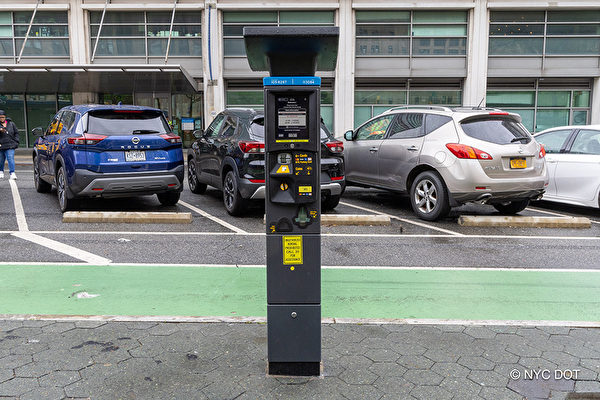New York City Department of Transportation (NYC DOT) announced on May 8th the upgrading and installation of new “paperless” parking meters citywide. The plan aims to enhance parking efficiency and reduce the use of paper receipts through modern technology.
The new meters allow drivers to input their license plate numbers and pay for parking directly at the meter, eliminating the need to display paper receipts in the vehicle. The new system is projected to expand to Manhattan, Queens, the Bronx, Brooklyn, and Staten Island within the next two years.
On Wednesday, May 8th, the city government began installing the new parking meters in Washington Heights on St Nicholas Ave at W 166th Street in Manhattan.
Ydanis Rodriguez, Commissioner of NYC DOT, introduced this technology at the press conference. The new devices feature full-color backlit display screens, support multiple languages, and offer contactless payment options to facilitate convenient payment for drivers. Users can install the “ParkNYC” app on their smartphones, link it to their credit cards, and easily complete the parking payment process via their phones.
The new system is expected to reduce the use of paper receipts, with the authorities estimating an annual saving equivalent to 2,500 miles of paper length. Additionally, the pay-by-plate system will sync with the “ParkNYC” app, which already has 1.8 million users.
NYC DOT also stated that “ParkNYC” can operate in sync with the New York Police Department’s (NYPD) system for combating illegal parking, providing real-time data to law enforcement officers so they can check if vehicles have exceeded the designated parking time limits, among other functions.
These changes will enhance parking management in New York City. However, the technological upgrades may inconvenience some users, especially those who are not accustomed to digital payments or smartphone apps.
As the city upgrades its 14,000 parking meters, authorities will continue to monitor the impact on urban traffic flow, public space management, and residents’ daily lives.

